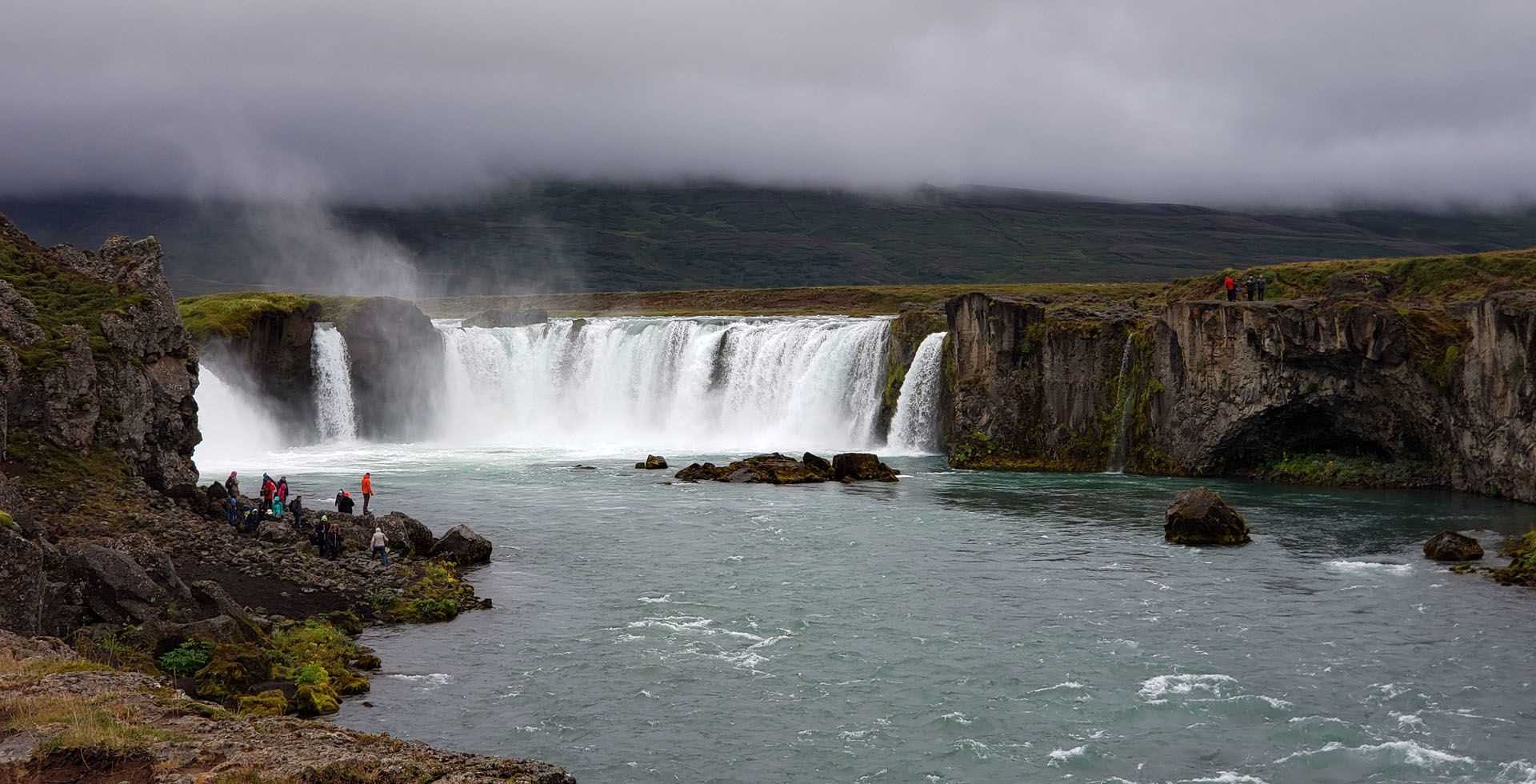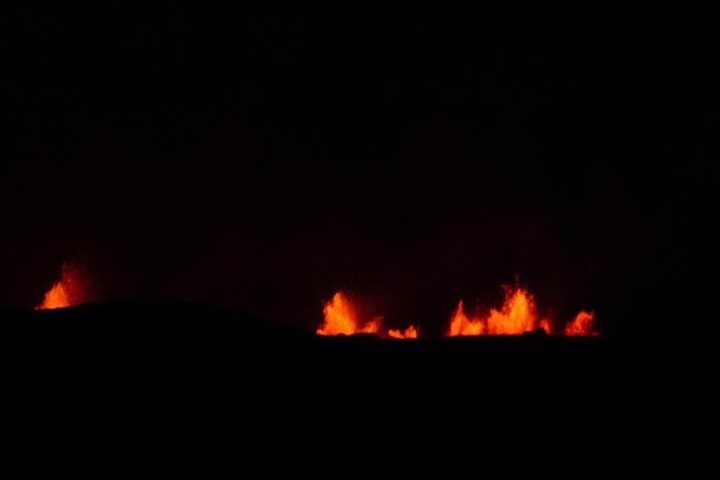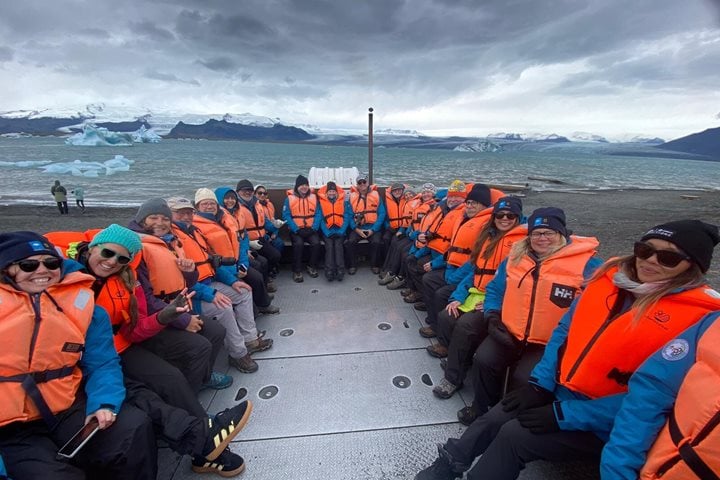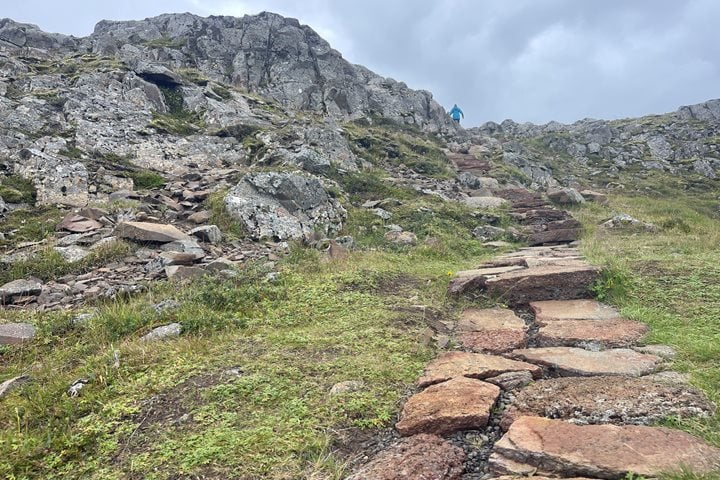After a calm night at the dock in Akureyri, we set out for full-day excursions in the volcanic wonderland of Mývatn, located at the edge of Iceland’s interior highlands. Everyone received excellent firsthand glimpses into the island’s geologic story, while also focusing on the unique opportunities of the region.
Our first stop was the powerful, semicircular Goðafoss waterfall, which carves a narrow gorge in local columnar basalts providing dramatic views of both the cascade and the downstream river itself. With a magma reservoir only two miles below the Earth’s surface, the Krafla hotspot shapes this landscape, creating hot springs, bubbling mudpots, steaming fumaroles, bold-colored sediments, and other volcanic structures. All tours walked among the lava pillars of Dimmuborgir, followed by a visit to the geothermal features. Those interested in a more vigorous hike also went to Hverfjall, a tephra crater more than 1km across that formed over 200 years of explosive eruptions.
Lake Mývatn, a nesting and feeding site for many bird species, is a flooded, very flat lava field; the lake takes its name from the abundance of midges that feed on the nutrient-rich freshwater algae, in turn providing food source for the birds. One tour emphasized observing and learning about avian residents and migrants; an additional group of guests spent the afternoon relaxing at the hot spring-fed spa in Húsavík.
The northern coast of Iceland is home to many species of marine mammals—indeed, we saw several humpback whales in the fjord today—and our evening was dedicated to learning about the ongoing research and conservation efforts of Tom Grove, a local biologist.









